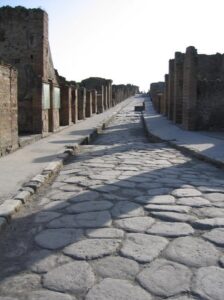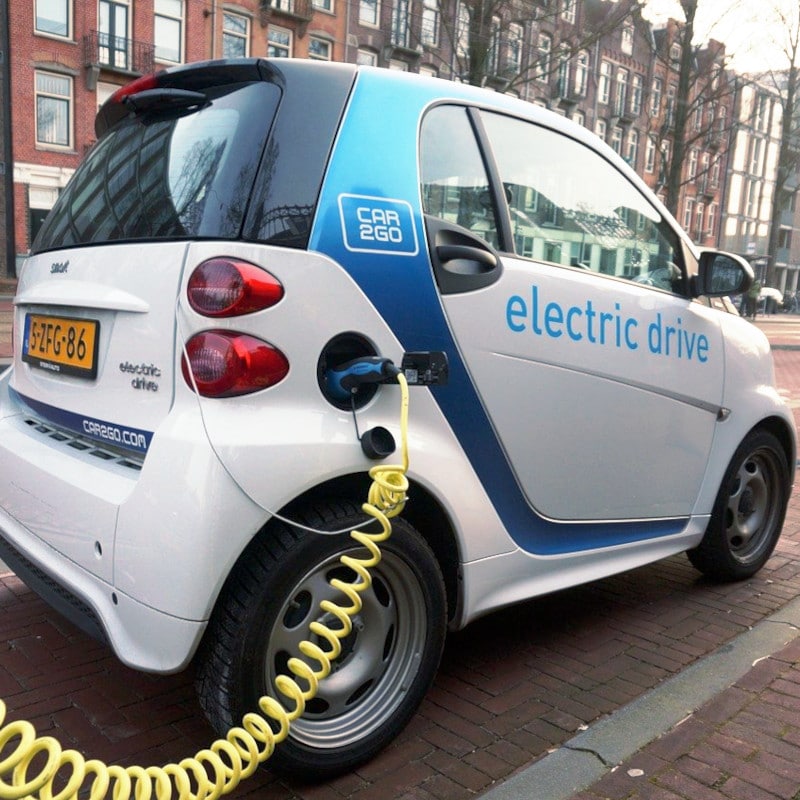Who Invented the Roads?
The Romans Invented the Road
Roads are fantastic things, pieces of infrastructure that get us from A to B in a convenient way, usually the most direct way. The Romans loved them, and started making them in earnest. The Romans though, built them to walk on. They marched armies on them all over Europe. They were constructed also to accommodate horse riders, chariots, and carts. The Romans in reality, invented the road.
“The Roman Empire built straight strong stone Roman roads throughout Europe and North Africa, in support of its military campaigns. At its peak the Roman Empire was connected by 29 major roads moving out from Rome and covering 78,000 kilometres or 52,964 Roman miles of paved roads.” (source)
Once the roads were created, and the Romans used them to position their army wherever they desired, the roads were not left unused. The roads were built to last, with the best of engineering and building techniques of the day. The locals used them, traders used them to transport goods, pilgrims used them to travel abroad. The roads were a benefit to all.

Roads are for Vehicles
Why Are Roads Not for Everyone?
Step forward to the 2020’s, and roads have become almost for the exclusive use of the car, the bus, the truck, and all large motorised transporters in general. If you’re not in one of them, or driving one of them, then get off the road. We have come to believe, in the modern age, that the roads belong to vehicles. And, in reality, when new roads are planned, and built, very little consideration is given to the use of that stretch of road by anyone other than vehicle users.
The situation is improving slowly. Most new stretches of road have at least a pedestrian walkway alongside. Some have a narrow strip of tarmac allocated to the bicycle. In the main though, the road has been planned and designed for vehicle traffic. Everything, and everyone else, is an afterthought.
Roads are Expensive
Of course, roads are expensive. They cost a great deal of money to build, and a fair amount to maintain. That is why people don’t build roads. It is the prerogative of national and local government to budget for the cost and maintenance of roads. This cost though, the money to pay for these roads, is raised through taxes. Everyone, every citizen, pays a little bit towards the cost of a road.
Economics dictate that the narrower a stretch of road is, the cheaper it will be to build. A long narrow road with two lanes, is the same cost as a short wide road with two lanes, a safe cycle lane, and pedestrian walkways. The short wide road may have enough space to accommodate all who would want to use it, but economics of scale put a damper on that. The road generally is made for the main users, vehicle users, and everyone else is given short shrift.

Roads Take up Space
Limitations on space also have an impact. Towns and villages tend to have narrow streets, especially in the UK and Europe, so there is just not enough space to build a road able to accommodate everyone that would want to use it. So, what can we do?
If you build it, they will come. Or if you build it, they will use it. It is a proven fact that building more and wider roads, leads to more vehicles using that road. The road gets congested, demands are made to make it wider, to accommodate more traffic, more vehicles. More vehicles come to use the recently widened road, it gets congested, demands are made for another road, or a bypass, or more widening to accommodate more vehicles. It seems to go on and on, the county over, the country over, the world over. This is not a sustainable practice in this day and age.
Ban the Car
Here is an idea. Ban the car from city and town centres. Except for exceptional exemptions, e.g., drivers with disabilities. Force, YES, FORCE people to use other methods of transport where there is limited space, e.g., trains and buses, and use the existing road infrastructure exclusively for pedestrians and personal transportation like bicycles, ebikes, and scooters. Of course, there is also a need for delivery vehicles, and these could be accommodated, but with a severely restricted speed limit, i.e., the same limit as is allowed for personal transport. This should not be such a hindrance if the only other traffic on that stretch of road is other delivery drivers and cars with disability badges.
See also: Commuting on an Ebike
And: Why you Should Buy an Ebike
Roads Exclusively Used by Green Personal Transport
Imagine a safer, cleaner, town or city centre where the roads are almost exclusively used by green personal transport or pedestrians. If you are a car driver, imagine not having to circumnavigate several blocks just to find a free parking space for your vehicle, and then have to pay through the nose for using it when you do.
Here is another idea. When a new road is proposed, or redevelopment is planned, cater first for pedestrians and users of cycles, ebikes, and scooters. Then look to accommodate vehicle users. There are ways innovative city and town planners can come up with to mitigate the number of vehicles that use a stretch of road. Lessening the amount of space required for cars, e.g., lanes, laybys, parking bays, etc. Cutting the number of cars, especially cars whose sole occupant is the driver, leaves so much space for everyone else.
Everyone Loves Their Car
All car owners love their car. They regard it as their right to own and use. This is not in dispute. Car owners though, have to realise, especially in this day and age of a looming climate disaster, that cars are not a very climate friendly means of transport. Even electric cars use up a great deal of energy and cause the creation of greenhouse gases in their production at the factory. Yes, they are greener when the driver jumps in and drives a new model from the showroom, but the emissions cost of manufacture must also be taken into account.
Car Drivers don’t Own the Roads
Everyone Owns the Roads
The time is coming soon when drivers of cars will have to relinquish the belief held by some, that the roads exclusively belong to them. Paying a road tax does not mean you have priority use of a stretch of highway, that tax only helps pay for the damage through wear and tear that heavier vehicles make to the roads. Paying road tax does not pay for any exclusivity in the world of today. Get used to the fact that in the very near future, bicycles, ebikes, and scooters, will be sharing the same bit of tarmac with you. This means you will have to adapt your driving, probably lower your speed, and definitely take more care when using the road. After all, you are in a vehicle that kills people.
Of course, cars are essential to a great deal of people, and that is why today’s roads exist, in an ever-expanding network of infrastructure. It would be wonderful if every car was electric, and every car had four people making the journey instead of the more usual, driver as the sole occupant.
The Day of the Car
The day of the car is not over. People will own and operate cars for a long time to come. The day of the car being the number one priority in transport infrastructure projects, especially in towns and cities, is coming to an end though. As the climate crisis develops, and as more and more people seek greener methods of travel, the numbers using personal transport, like cycles and scooters, rather than vehicle transport, like cars, will increase. This increase may be slow in growth at the moment, but eventually the numbers will reach a tipping point where local and national governments will have to take heed, and when planning developments and upgrades on transport infrastructure, will require new thinking and innovative ideas to accommodate the new users of such projects.
Era of Green Personal Transportation
The day of the car may not be over, but this is the dawn of the era of green personal transportation systems. Cycle users, scooter users, and pedestrians, will soon be the priority when new roads are built.

